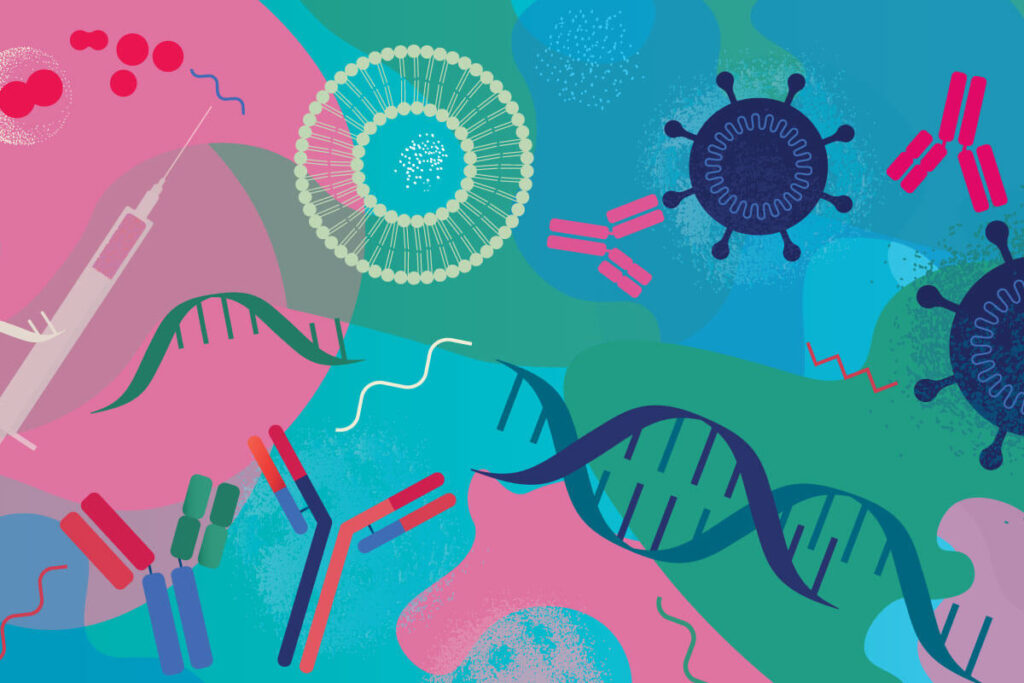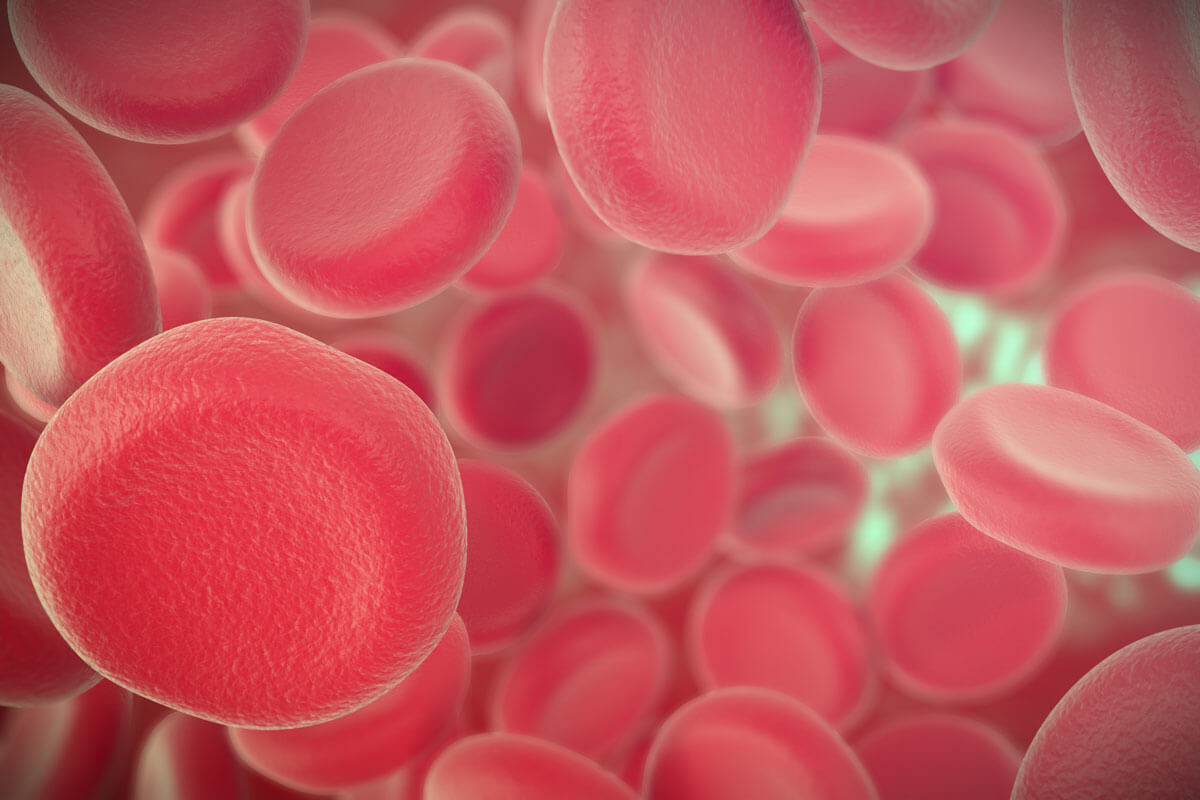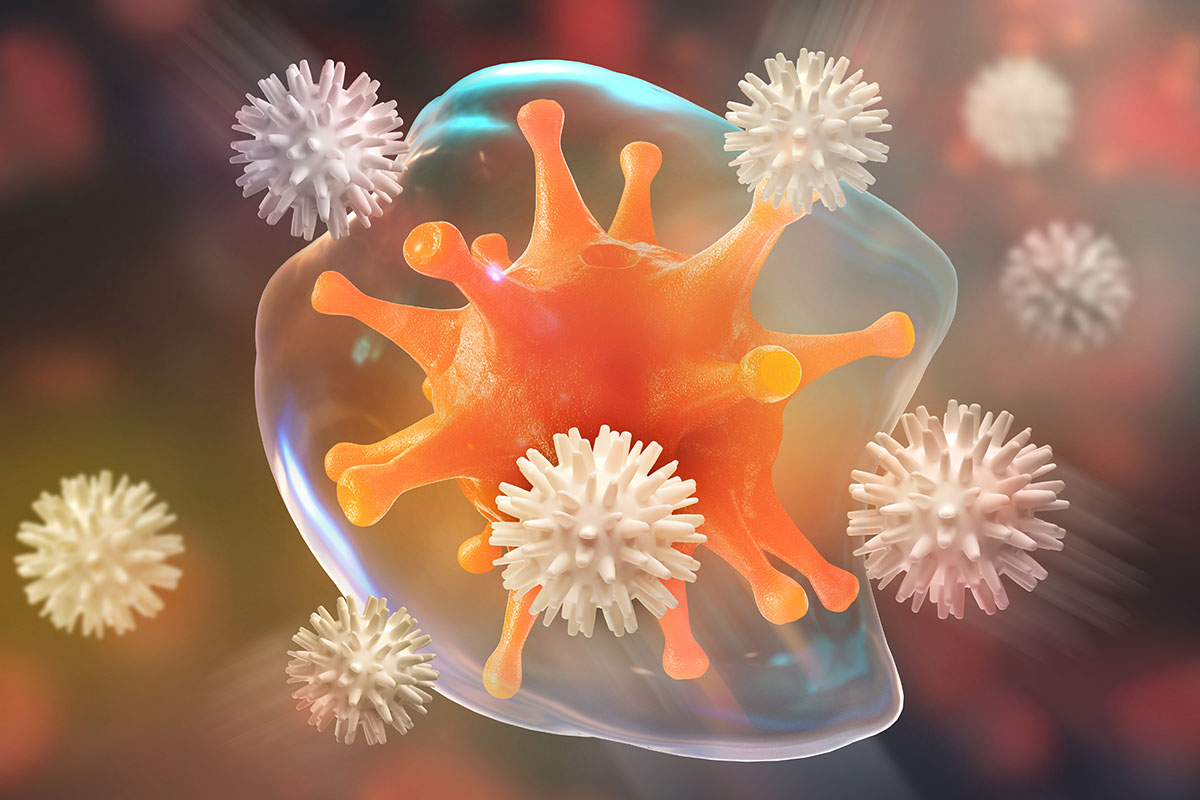I recently read a quote that said, “COVID will be around long after the pandemic has ended.” This statement can be interpreted in more ways than one, but the author was referring to the chronic symptoms 10-30% of people who get COVID will experience. With over 80 million cases of COVID reported in the U.S. (and likely many more not reported), a substantial number of Americans will suffer from Long COVID for many months or years. So, what causes Long COVID?

Chronic Symptoms Following Infection
Chronic symptoms following acute infections are not a new phenomenon. A similar percentage of people who get Lyme disease go on to experience chronic symptoms. The onset of Myalgic encephalomyelitis /chronic fatigue syndrome (ME/CFS) is associated with viral infections, including the Epstein-Barr virus. Since the COVID pandemic, researchers have been trying to understand why debilitating symptoms persist for many people.
What is Long COVID?
A few months after the onset of the COVID-19 pandemic, some people reported symptoms that did not resolve after the acute phase of infection with COVID. Other people reported new symptoms that persisted following the acute infection. The name used when people first described the lingering symptoms was long-haul COVID.
When the scientific community began looking into this chronic presentation, the description post-acute sequelae of SARS CoV-2 (PASC) was adopted. However, using the terms “post” and “sequelae” suggests the infection has resolved, and the symptoms are related to another cause. The current nomenclature used to describe chronic symptoms following acute infection with the SARS CoV-2 virus is Long COVID.
Long COVID Occurs After a Mild Infection
Surprisingly, the people who contract mild cases of acute COVID are at an increased risk of developing Long COVID. The mild immune response may not have entirely knocked out the virus allowing the remaining viral particles to contribute to chronic symptoms. The typical pattern in developing Long COVID is a person recovers from the acute phase of symptoms, including fever, cough, sore throat, nasal congestion, and fatigue. Then after a week or two, the chronic symptoms such as fatigue and brain fog begin. The severity of symptoms can vary from mild to debilitating.
Causes of Long COVID
The SARS CoV-2 virus that causes COVID has a spike protein on its outer surface that is very toxic. Several possible mechanisms contribute to the persistent pathology associated with Long COVID.
- Following an acute infection, the viral spike protein can persist, causing an inflammatory response of immune cells called monocytes and lymphocytes.
- The formation of autoantibodies after acute COVID can develop and attack organs and tissues, leading to symptoms. About a hundred autoantibodies are associated with COVID.
- Reactivation of viral and bacterial infections
- Mast cell activation triggered by COVID
- Hypercoagulation following COVID
Reactivated Infections Associated with Long COVID
Reactivation of viral and bacterial infections is another potential cause of Long COVID. Common reactivated pathogens include Epstein Barr virus (EBV), Lyme disease, herpes virus, and mycoplasma. Some people who experience the reactivation of an underlying infection were aware they had prior infections, while others had never been diagnosed with previous infections.
One study examined the prevalence of reactivated Epstein Barr virus in people suffering from Long COVID. The diagnosis of reactivated EBV was made using EBV early antigen (EA) and EBV viral capsid antigen (VCA) IgM.
Researchers found that 66% of people with Long COVID had reactivated Epstein Barr virus (EBV) compared to 10% of controls.
People with a history of Lyme disease also reported reactivation of tickborne infections following acute infection with COVID. Patients often ask me if their chronic infections ever go away. There likely is a dynamic state where the pathogen (virus, bacteria) load is low, and a properly functioning immune system allows people to experience few or no symptoms. When the pathogenic load increases or the immune system weakens, symptoms return. T-cell testing is the best way to determine if an infection is active or not.
Long COVID Symptoms
- Fatigue, post-exertional malaise, brain fog
- Insomnia, tinnitus, vertigo, dizziness, numbness, tingling, cold or pain sensation in extremities, weakness in extremities
- Uncontrolled movements, “awake convulsions”
- Difficulty processing tasks/focus
- Short and long-term memory loss
- Difficulty speaking at times
- Headaches, migraines
- Loss of taste/smell, parosmia
- Anxiety, depression
- Dysautonomia/POTS
- Joint pain, muscle aches, fibromyalgia
- Night sweats, hot flashes
- Skin sensitivity, itching, rashes, redness
- Eye pressure, vision problems
- Menstrual changes
- Urinary frequency
- Abdominal pain, diarrhea, nausea, vomiting, bloating, food intolerances
- Palpitations, vertigo, arrhythmia, low blood pressure
Mast Cell Activation Syndrome and Long COVID
The increased inflammatory response in acute and long COVID may, in part, is mediated by mast cell activation. Mast cells are immune cells that contain chemical mediators that release in response to various triggers, including infections. The SARS CoV-2 infection or the resulting cytokines may contribute to mast cell degranulation. Symptoms associated with Long COVID are similar to those experienced in mast cell activation syndrome.
A group of researchers set out to determine the prevalence of mast cell activation in Long COVID. They recruited people through a Long COVID group on social media and asked them to complete questionnaires about symptoms before and after developing Long COVID. The results demonstrated mast cell activation symptoms are significantly increased in Long COVID.
Hypercoagulation Contributes to Long COVID
Increased coagulation is a natural response to an inflammatory state. However, when inflammation persists, it contributes to increased clotting factors and hypercoagulation. Decreased oxygen delivery to organs, tissues, and cells causes symptoms of fatigue, pain, and brain fog seen in Long COVID.
Several research studies have confirmed dysfunction in the lining of blood vessels and clot formation in COVID infections. One study measured multiple parameters related to the blood vessel lining dysfunction and clotting markers and concluded the sustained abnormal findings might contribute to the persistent symptoms of Long COVID. Another study found micro clots in blood samples of people with Long COVID and a substantial amount of inflammatory molecules inside the clots.
Treatment of Long COVID
Due to the significant volume of people suffering from Long COVID, it was only a matter of time before clinics directed at treating Long COVID opened. Most of the Long COVID clinics in the U.S. are associated with university medical centers. Unfortunately, many Long COVID clinics come up short with effective treatments by only offering physical therapy and psychiatry.
The best-qualified physicians to treat Long COVID have been treating chronic infections and the resulting immune dysfunction, mast cell activation syndrome, hypercoagulation, and more for years. Timing is critical in treating Long COVID with earlier interventions leading to more favorable outcomes. A functional medicine approach using natural and conventional therapies is most effective.
Intravenous Vitamin C
Vitamin C is well-known for its role in immune support and as an antioxidant. The hallmark signs of COVID are increased inflammation, hypercoagulation, and immune suppression. There are 12 studies published about the use of vitamin C for COVID.
“Because of its anti-oxidative, anti-inflammatory, endothelial-restoring, and immunomodulatory effects, the supportive intravenous (IV) use of supraphysiological doses has been investigated so far in 12 controlled or observational studies with altogether 1578 inpatients with COVID-19. In these studies, improved oxygenation, a decrease in inflammatory markers, and a faster recovery were observed.”
Other evidence supports the use of high-dose, intravenous vitamin C to treat chronic viral infections such as Epstein Barr virus (EBV). If reactivated EBV is a potential cause of Long COVID, intravenous vitamin C is a logical treatment to consider.
Ozone Therapy
Ozone therapy has a long history of successfully treating chronic infections. Ozone produces peroxides and ozonides that destroy pathogenic organisms. Additionally, ozone produces an anti-inflammatory effect and helps restore a dysregulated immune response. Ozone therapy helps restore oxygen transportation of blood and reduces thick, hypercoagulable blood caused by infections. Ten-pass ozone is the preferred form of ozone therapy and has provided the most effective benefit in treating Long COVID.
Oral Medications and Supplements
The therapies used to prevent and treat Long COVID should be directed at the underlying mechanisms contributing to the symptoms. Several natural and pharmaceutical medications help resolve persistent infection with SARS CoV-2, restore normal immune function, stabilize mast cell activation, and address hypercoagulation.
Recovering from Long COVID
One in three people who get COVID will develop long-term symptoms. This will equate to about 30 million Americans and has already contributed to a labor shortage in the U.S. Effective treatments for other similar chronic conditions such as Lyme disease, and chronic fatigue syndrome (ME/CFS) are lacking, but hopefully, funding for Long COVID research will change this. Physicians should direct the treatment at the underlying mechanisms outlined above.
https://pubmed.ncbi.nlm.nih.gov/34204243/
https://pubmed.ncbi.nlm.nih.gov/34563706/
https://pubmed.ncbi.nlm.nih.gov/34425843/
https://pubmed.ncbi.nlm.nih.gov/34375505/
https://pubmed.ncbi.nlm.nih.gov/35571085/



